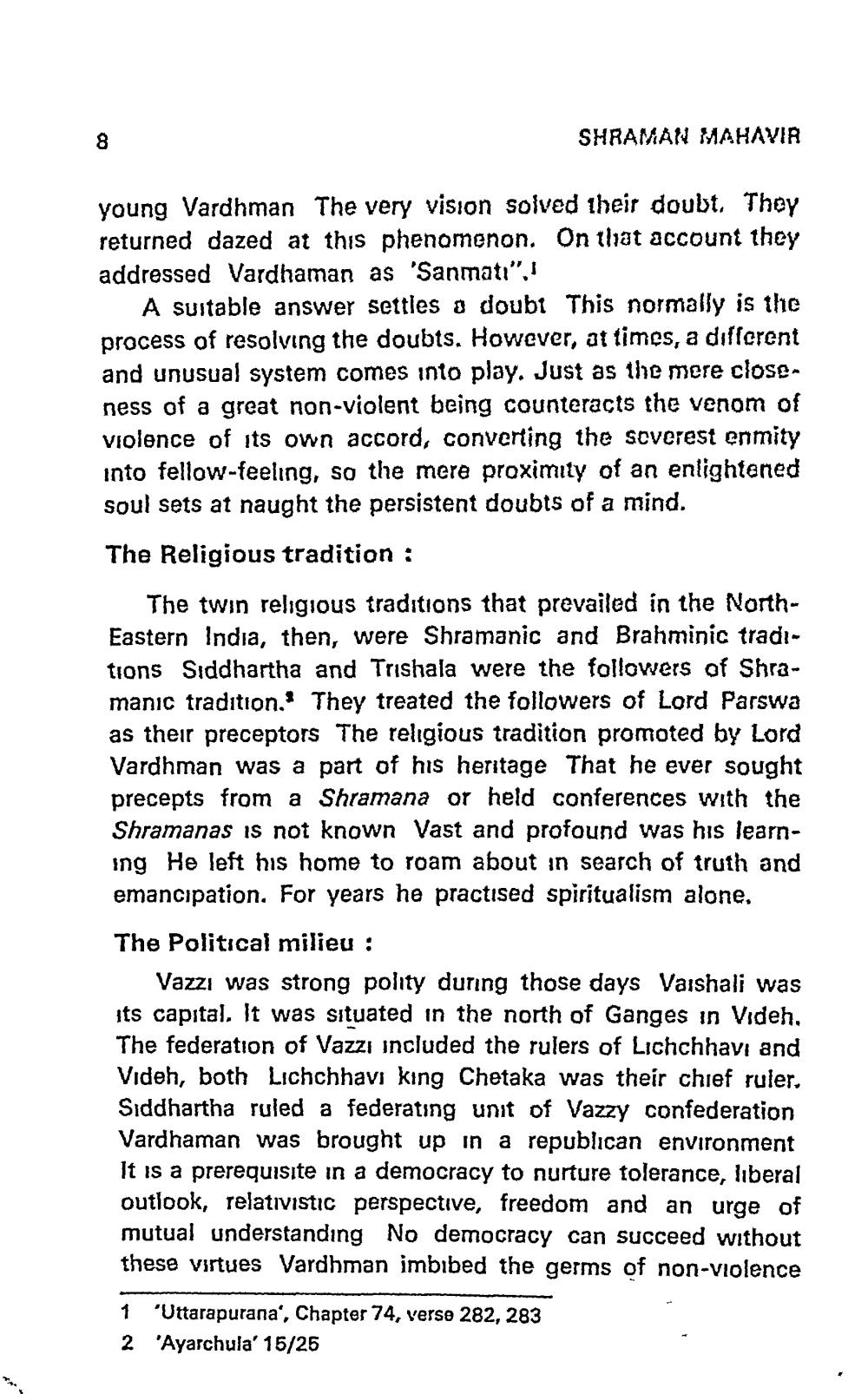________________
SHRAMAN MAHAVIR
young Vardhman The very vision solved their doubt. They returned dazed at this phenomenon. On that account they addressed Vardhaman as 'Sanmatı". I
A suitable answer settles a doubt This normally is the process of resolving the doubts. However, at times, a different and unusual system comes into play. Just as the mere closeness of a great non-violent being counteracts the venom of violence of its own accord, converting the scverest enmity into fellow-feeling, so the mere proximity of an enlightened soul sets at naught the persistent doubts of a mind. The Religious tradition :
The twin religious traditions that prevailed in the NorthEastern India, then, were Shramanic and Brahminic tradıtions Siddhartha and Trishala were the followers of Shramanic tradition. They treated the followers of Lord Parswa as their preceptors The religious tradition promoted by Lord Vardhman was a part of his heritage That he ever sought precepts from a Shramana or held conferences with the Shramanas is not known Vast and profound was his learning He left his home to roam about in search of truth and emancipation. For years he practised spiritualism alone,
The Political milieu :
Vazzı was strong polity during those days Vaishali was its capital. It was situated in the north of Ganges in Videh. The federation of Vazzı included the rulers of Lichchhavi and Videh, both Lichchhavi king Chetaka was their chief ruler, Siddhartha ruled a federating unit of Vazzy confederation Vardhaman was brought up in a republican environment It is a prerequisite in a democracy to nurture tolerance, liberal outlook, relativistic perspective, freedom and an urge of mutual understanding No democracy can succeed without these virtues Vardhman imbibed the germs of non-violence 1 'Uttarapurana', Chapter 74, verse 282, 283 2 'Ayarchula' 15/25




